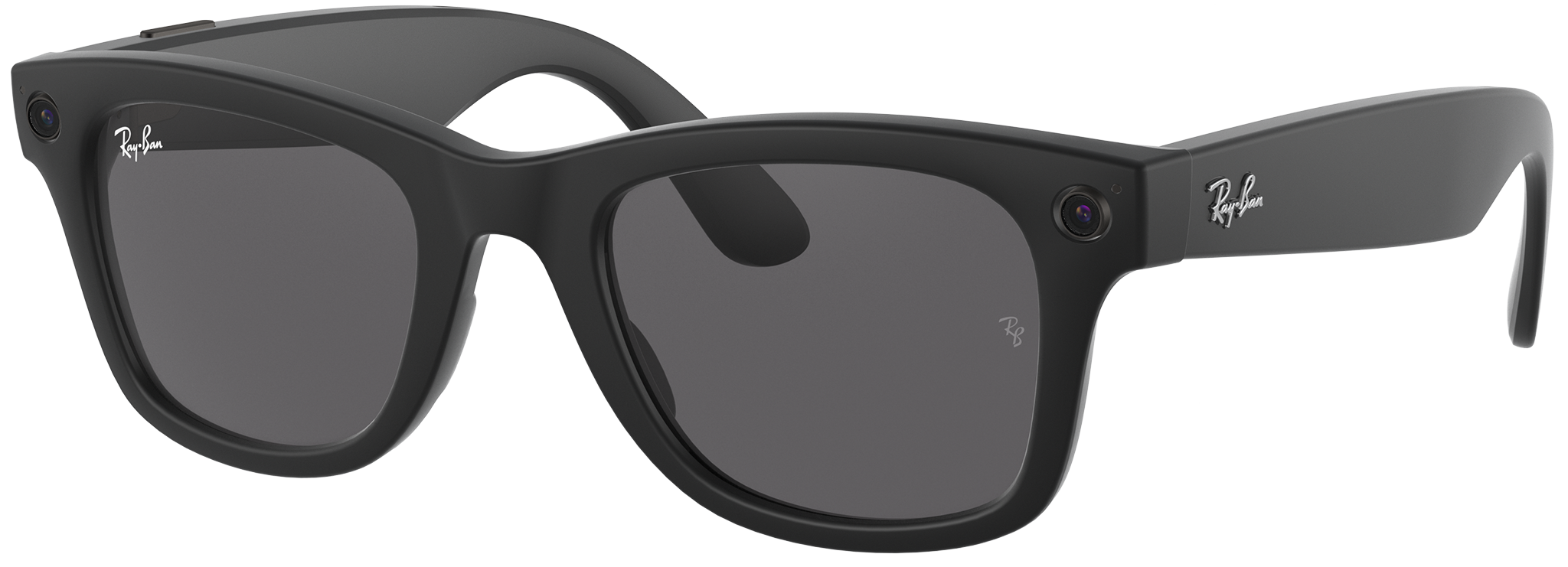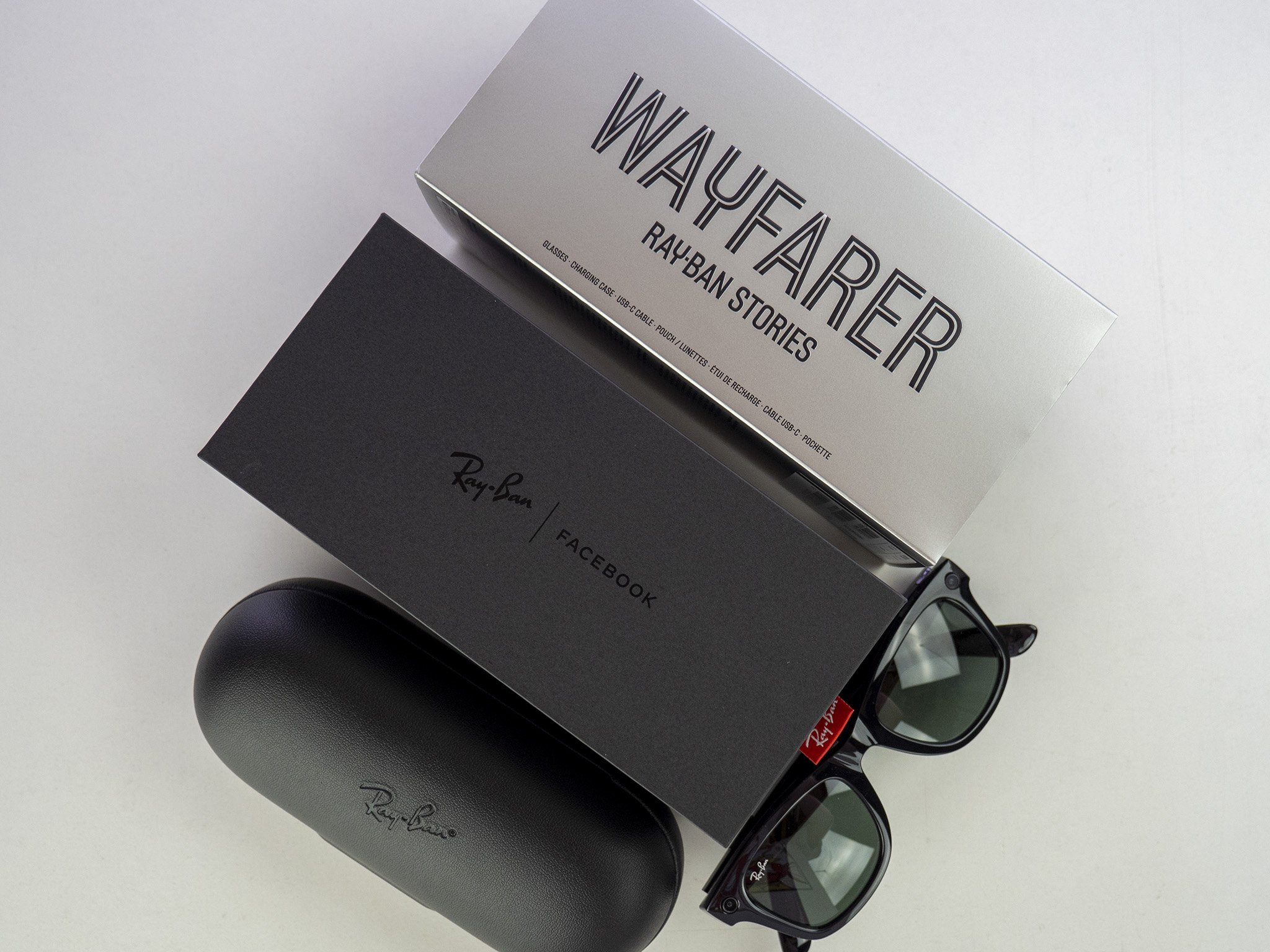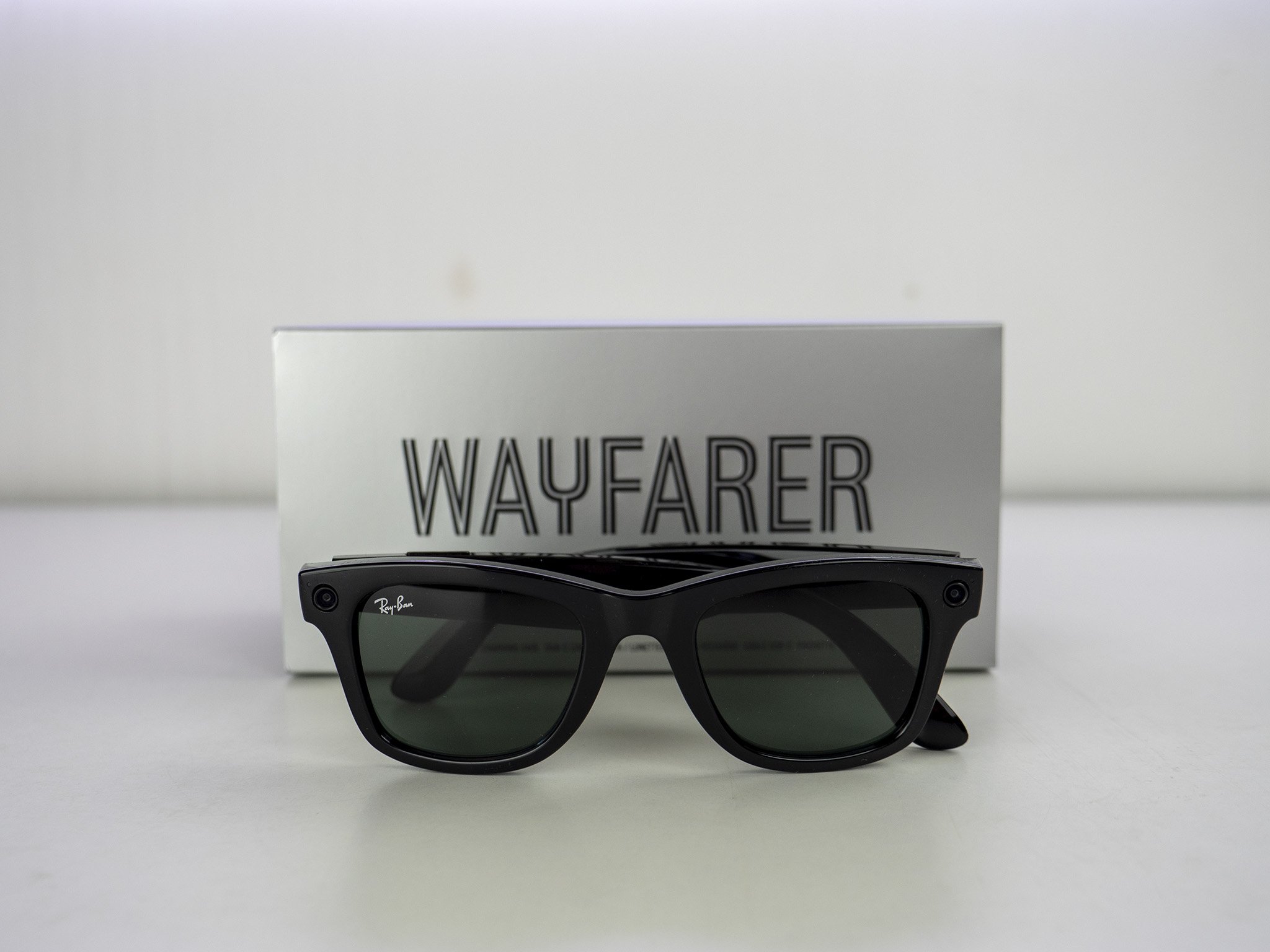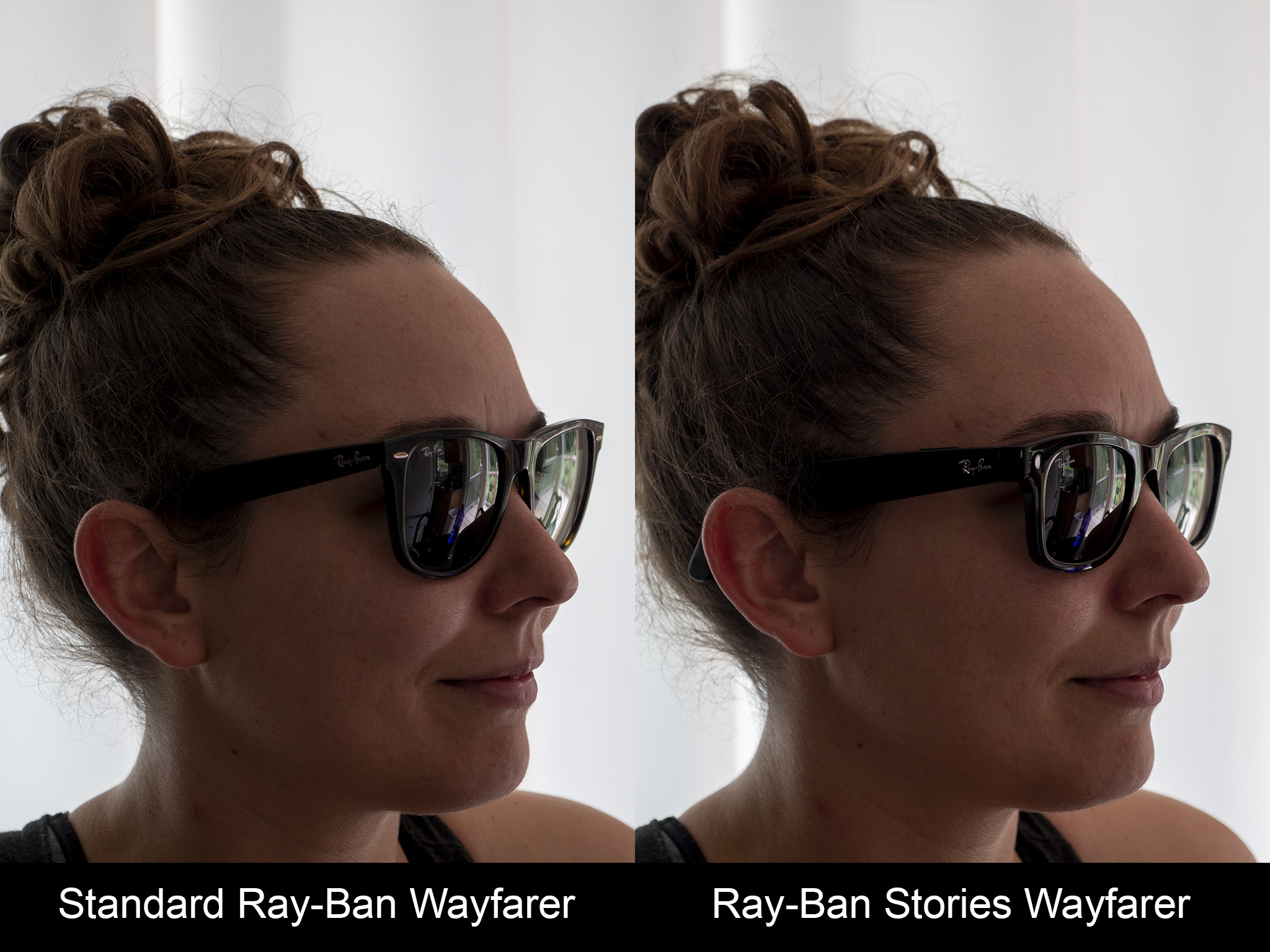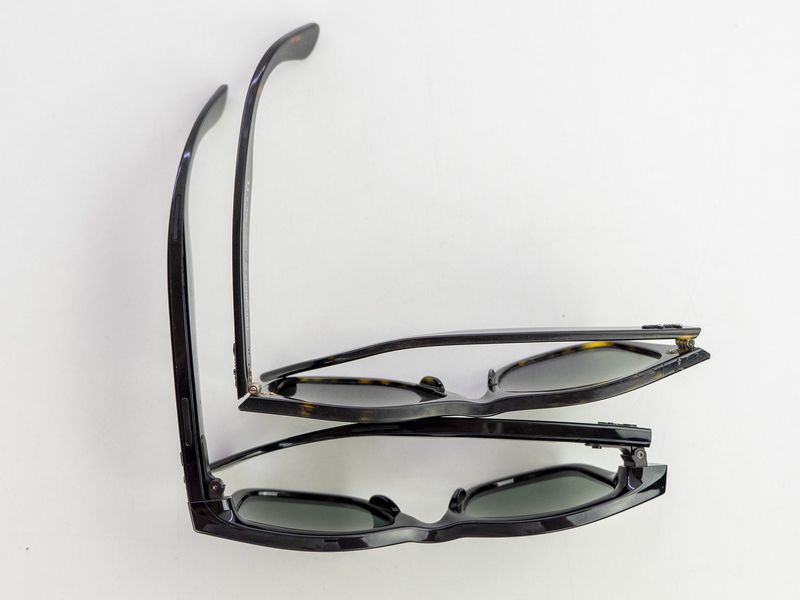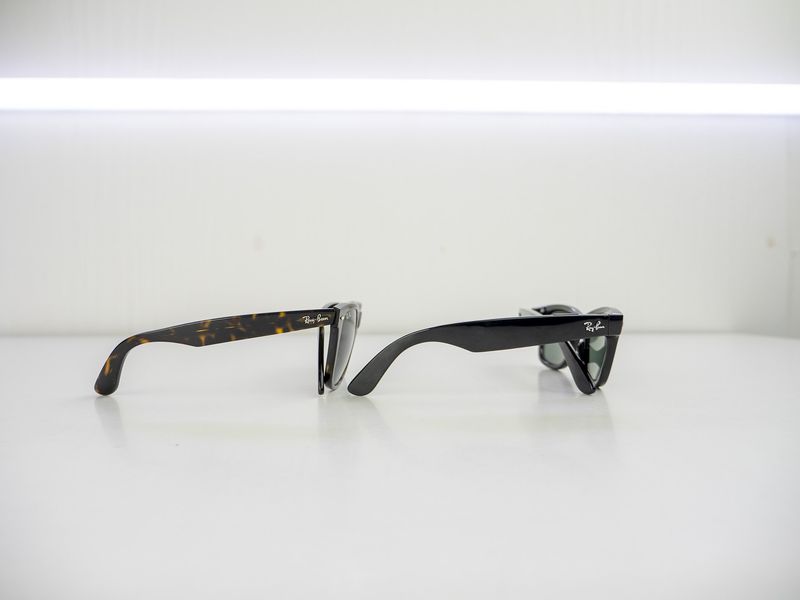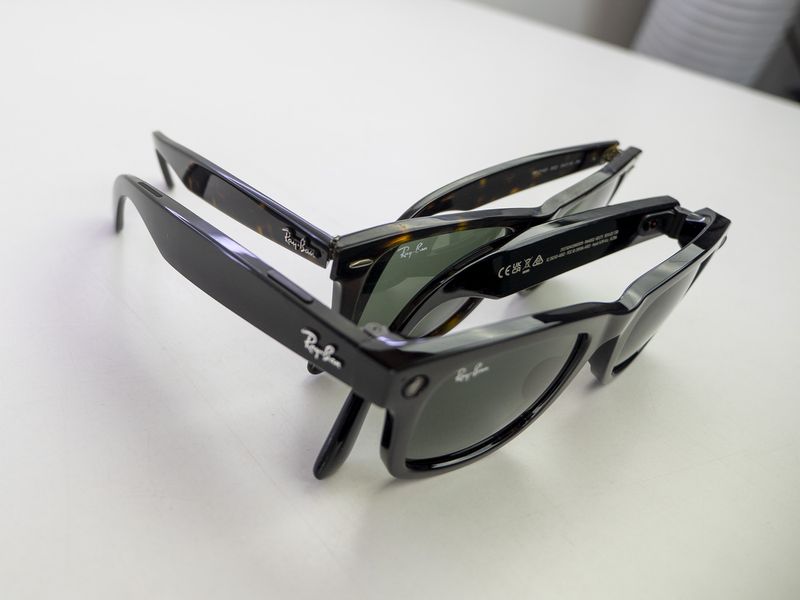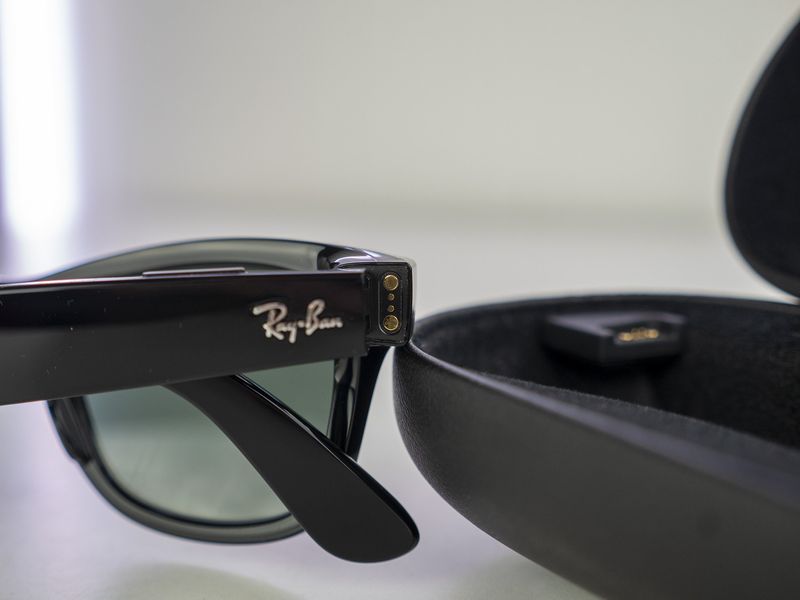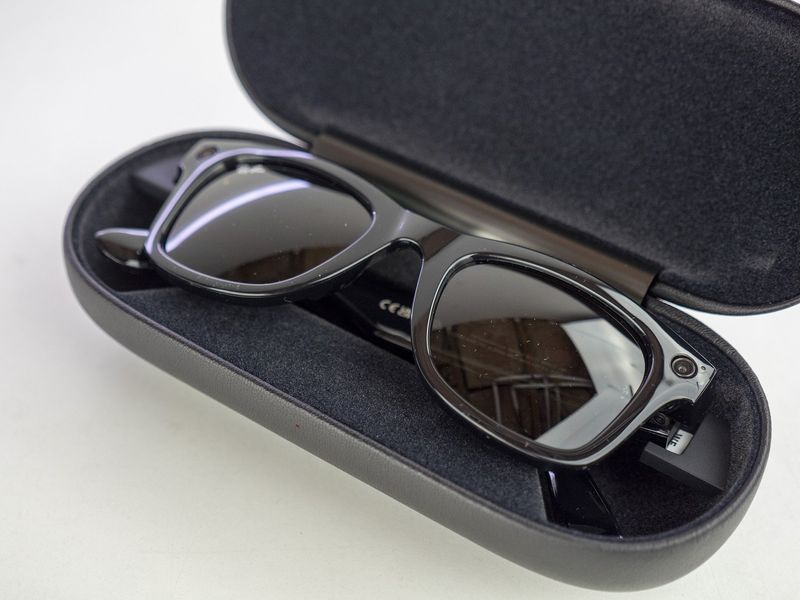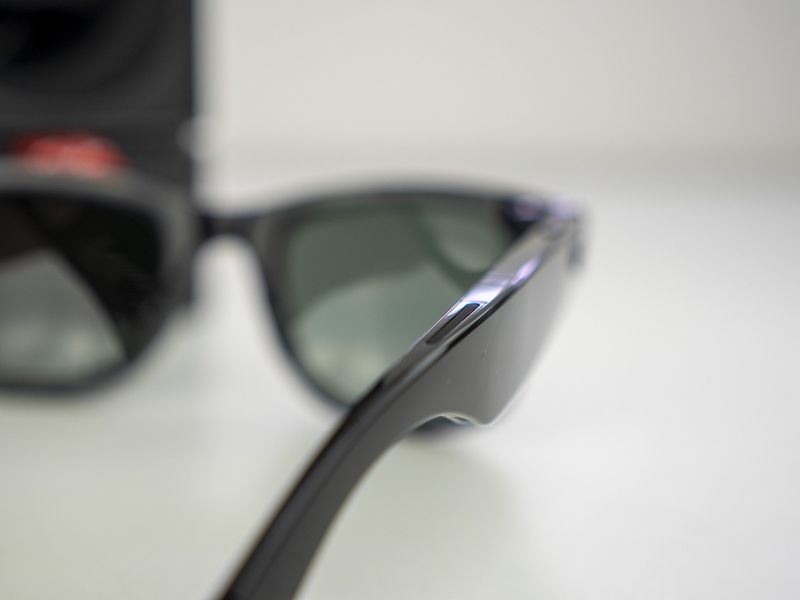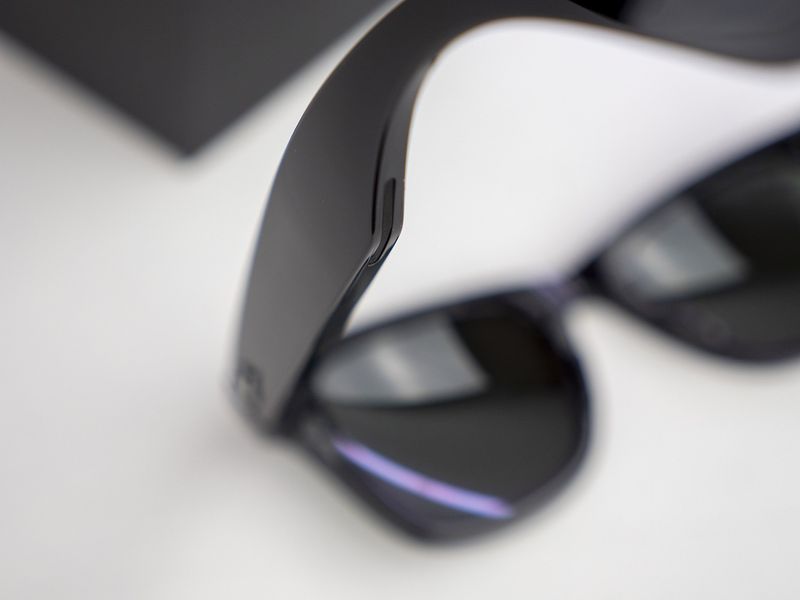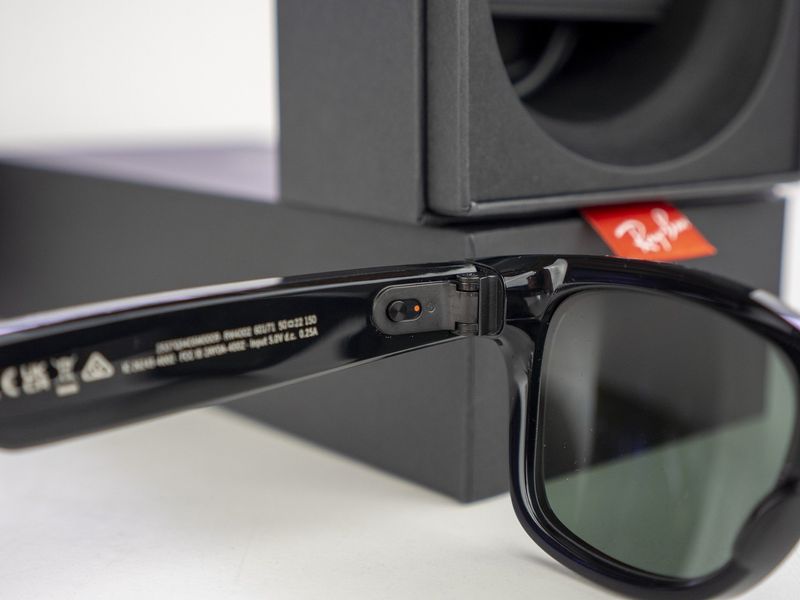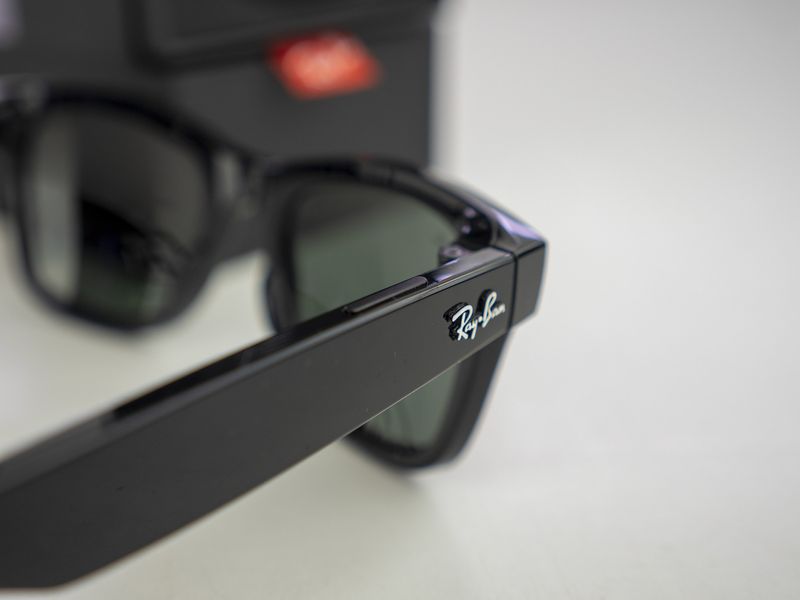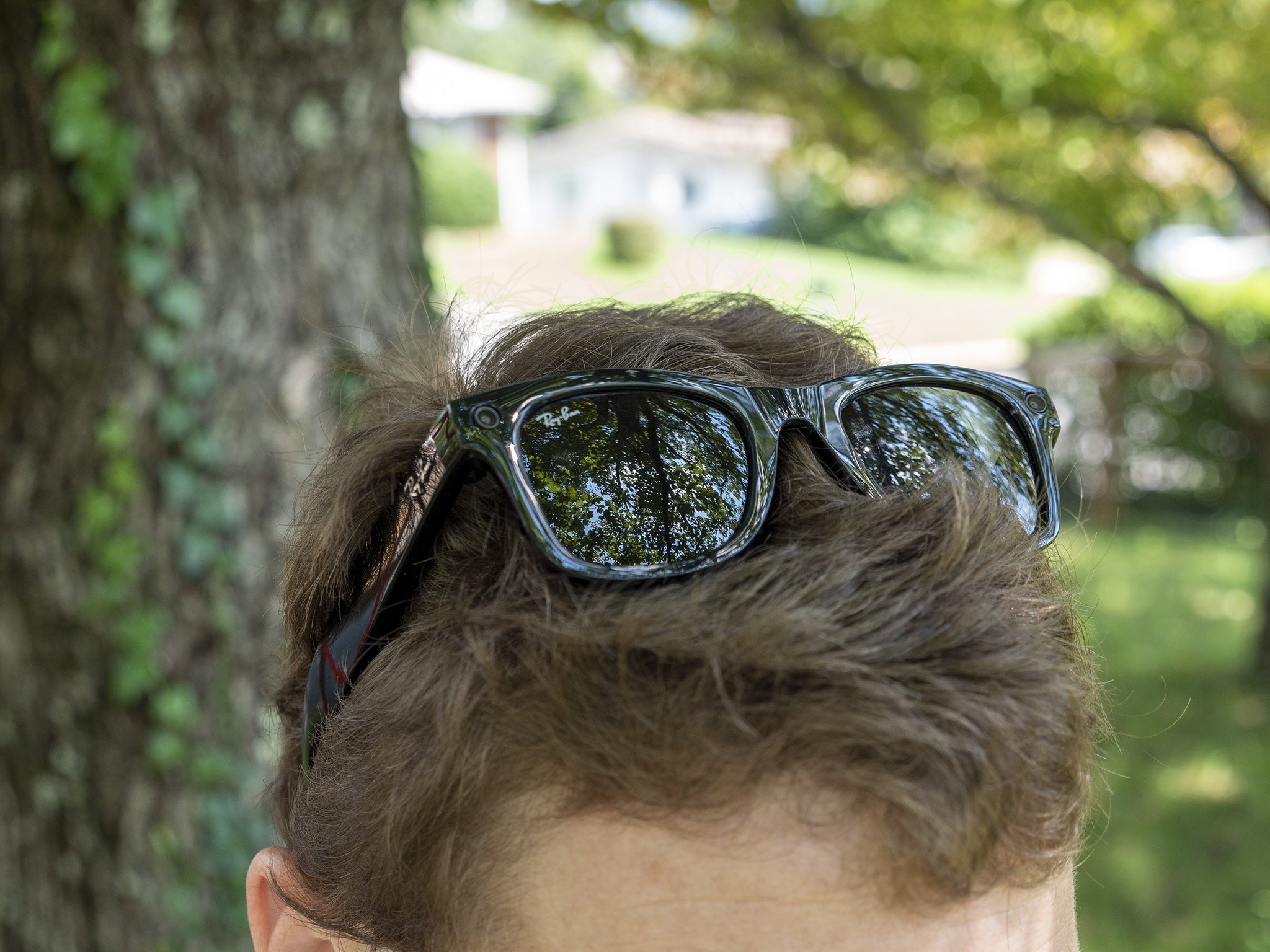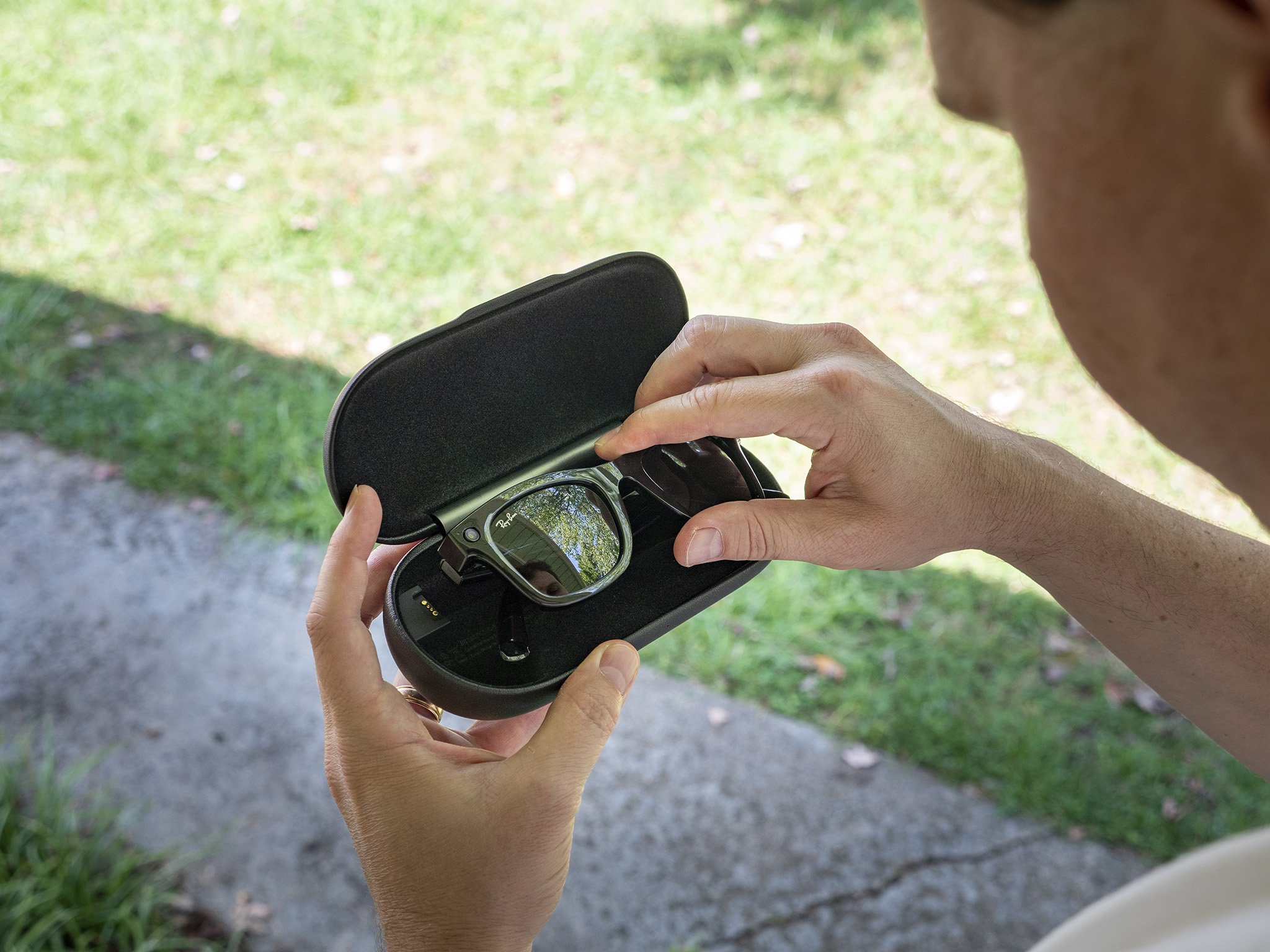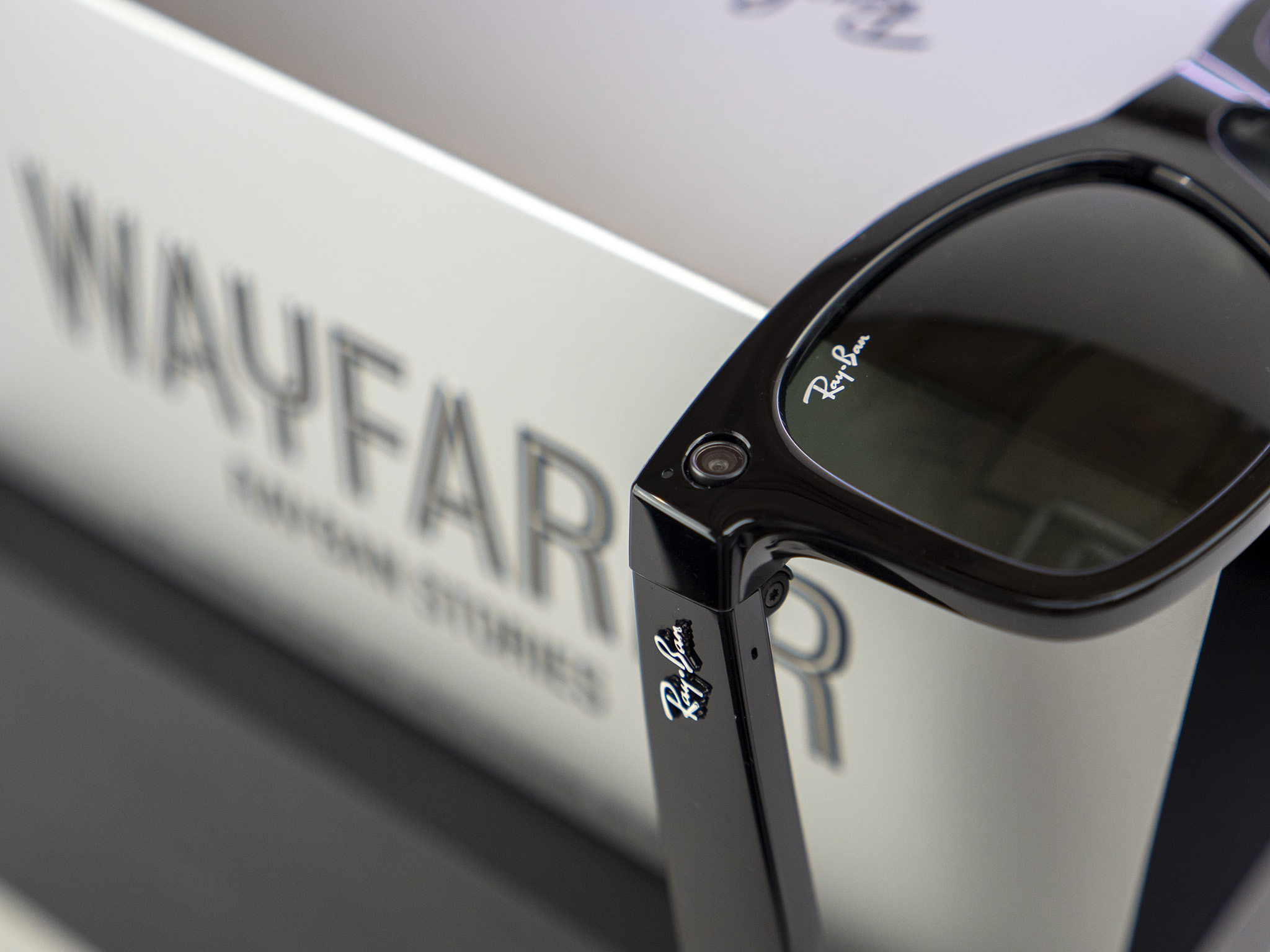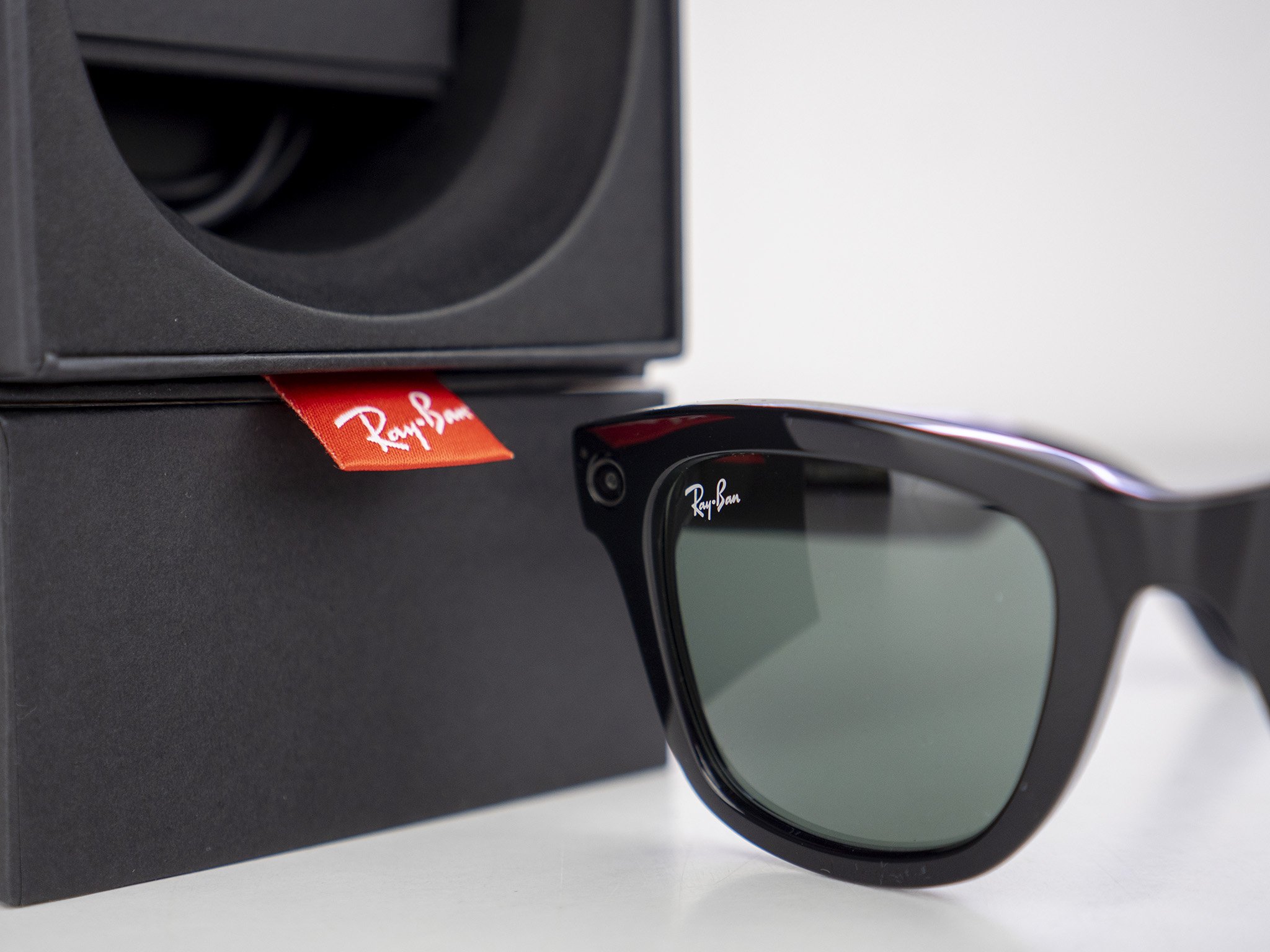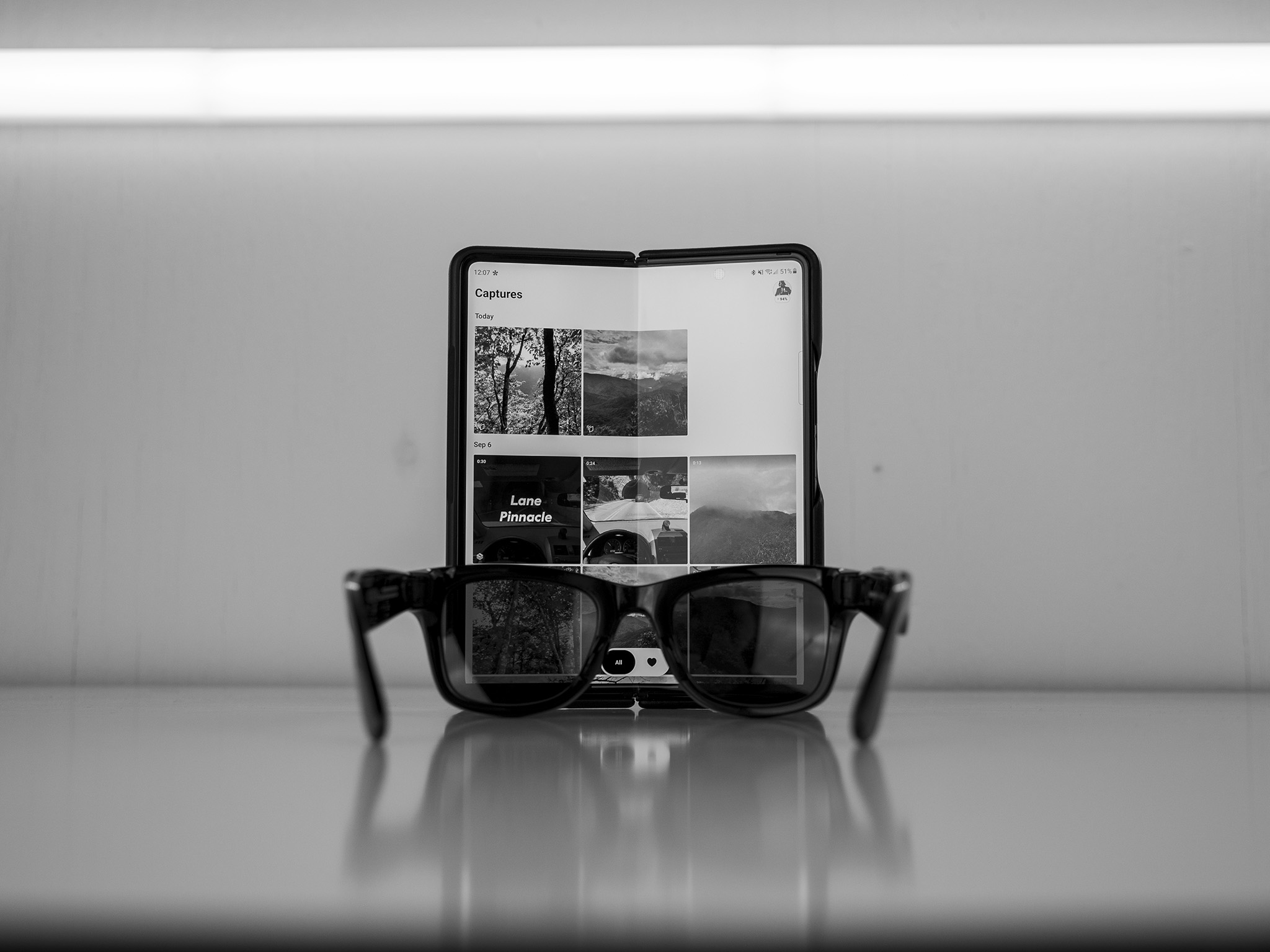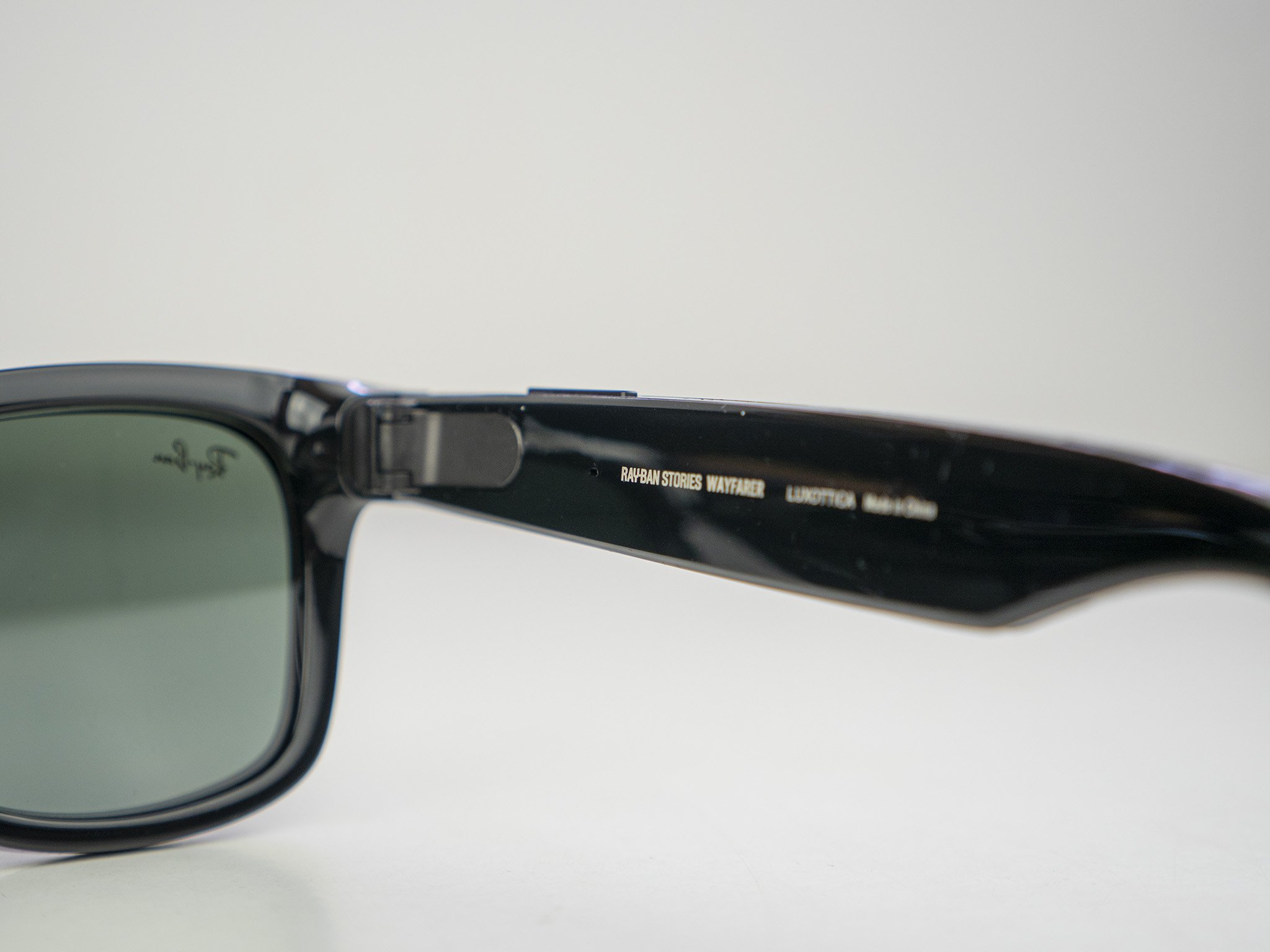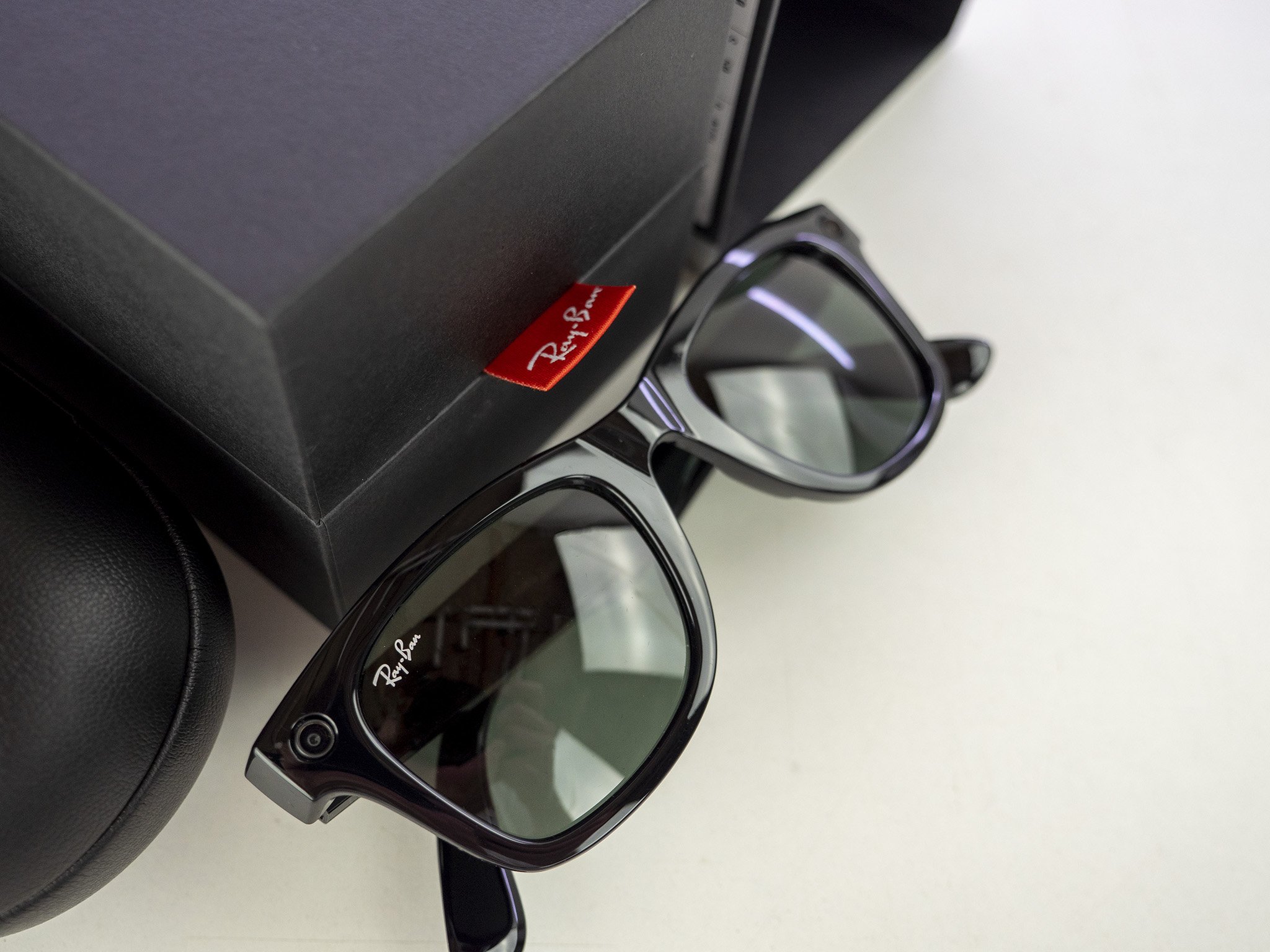With shades this stylish, you might forget Facebook was even part of the process.
There's a high likelihood that when you think of glasses, you think of Ray-Ban. The brand is as iconic as they come, and Ray-Ban is banking on its name and trademark styles to help ease your decision between these shades and the competition. Despite the Facebook involvement in development, you won't find Facebook branding anywhere on these glasses. You won't even use the Facebook or Instagram apps to grab pictures or videos taken with the glasses — a testament to how much work was put into assuaging fears of Facebook's attachment to the product.
While that's certainly a win for privacy concerns, it also represents a major missed opportunity to fully integrate these smart glasses with the Facebook ecosystem. After all, they're called Ray-Ban Stories. These glasses have cameras on them that can record video and take pictures, so what makes more sense than integrating them directly into the Stories' functionality within Instagram?
Ray-Ban Stories is the resulting product of years of work to make a pair of glasses smart without looking like a piece of wearable tech. They look like a pair of Ray-Bans, only weigh 5g more than a pair of Ray-Bans, and they feel like a pair of Ray-Bans from the moment you take them out of the branded charging case.
A pair of smart specs is a very different product from something like the best smart watch, and that's OK. If nothing, the fact that it's a very different product and serves its own purposes only further solidifies the idea that this is a product that you buy in addition to another type of smart wearable.
It's probably not the metaverse that you imagined when Facebook CEO Mark Zuckerberg teased it this summer, but Ray-Ban and Facebook's first pair of connected smart glasses represents a great vision of a product that you'll feel naked without once you start wearing them — assuming that the Facebook integration doesn't keep you from grabbing a pair in the first place. We'll take a look at all those things and more in our Ray-Ban Stories review.
Ray-Ban Stories
Bottom line: Ray-Ban Stories delivers those trademark good looks with a few added smarts. They've got open ear audio with Bluetooth phone call support and music playback, hands-free picture and video taking, tons of frame shape, size, and color options, and even quality Luxxotica lenses for any scenario you need.
The Good
- Proper glasses design and weight
- Lots of styles, colors, and lenses
- Separate app and privacy policy from Facebook
- Good quality photos and videos
- Surprisingly rich photo and video editing experience
- Open-ear audio that actually works
The Bad
- No water or dust resistance
- Facebook account required
- Limiting battery life
- Some audio quirks
Ray-Ban Stories: Price and availability
Ray-Ban Stories are available from September 9, 2021, at Rayban.com and other choice retailers. Since the glasses can be customized to fit your personal style, going through Ray-Ban's website is likely the best choice for most people interested in buying a pair.
Ray-Ban Stories are priced starting at $299 for the baseline frames. Additional lens selections can be made for an increased price: Polarized lenses starting at $329, transitions lenses starting at $379, and varied prices for prescription lenses. Ray-Ban Stories are also available in three main styles, including Wayfarer and Wayfarer L, Round, and Meteor. Shiny Black, Matte Black, Shiny Blue, Shiny Olive, and Shiny Brown colors can be chosen for each style. Additionally, six lens types are available in G-15 green, photochromatic G-15 green, dark grey, polar dark blue, brown gradient, and clear.
All pairs of Ray-Ban Stories come with a protective charging case, a USB Type-C charging cable, a soft carrying case, and a set of manuals.
It's easy to compare Ray-Ban Stories to the smattering of options available on the market. They're more feature-filled than Razer Anzu or Amazon Echo Frames, despite only being around 20% more expensive. They're also 20% less expensive than the most direct competition — that's Snap Spectacles 3 — while also offering a near-identical feature set and looking more like a toned-down pair of Ray-Bans than Snap's more outrageous styling.
It's about way more than just style
Ray-Ban Stories: The good looks you were hoping for
When Ray-Ban decided to partner with Facebook to make either company's first pair of smart glasses, it's clear that Ray-Ban wasn't willing to concede its trademark looks just to put some electronics inside the frames. The result is a pair of glasses that looks every bit Ray-Ban and only a little bit early-generation wearable tech.
For this review, Facebook provided me with a pair of shiny black Ray-Ban Stories in Wayfarer style, outfitted with G-15 Green lenses. That means they're only good for wearing outdoors, as sunglasses are largely useless indoors if you're not an '80s pop singer. If I were to order my own pair, I'd certainly opt for ones with transitions lenses so I could wear them more often.
This is a pair of glasses that looks every bit Ray-Ban and only a little bit early-generation wearable tech.
The ability to choose between so many styles, colors, and even lens types really helps Ray-Ban Stories stand apart from the pack. That, and the fact that these truly look and feel like a relatively normal pair of glasses helps increase the possibility that you'll actually want to wear these daily. In fact, at only 5g heavier than a normal pair of Ray-Ban Wayfarers, I quickly swapped out my regular pair of sunglasses with these and never thought twice about their comfort or looks.
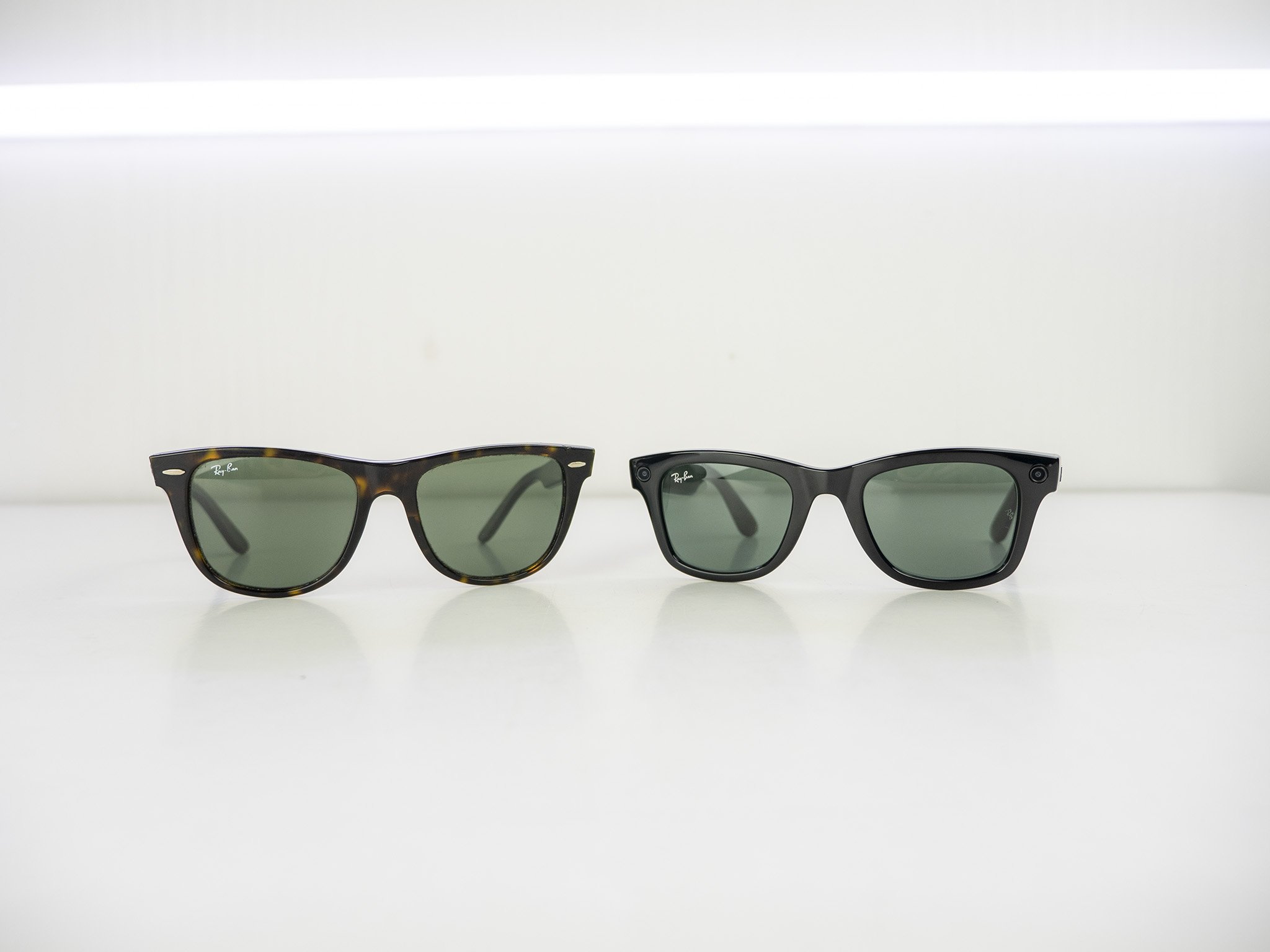 Standard Ray-Ban Wayfarer glasses versus Ray-Ban Stories Wayfarer
Standard Ray-Ban Wayfarer glasses versus Ray-Ban Stories Wayfarer
Ray-Ban Stories has almost everything you would expect to have on a pair of smart glasses in 2021, sans a Google Glass-esque screen for AR applications. Speakers are embedded in the temple tips, a 3 microphone array ensures quality voice recording with noise cancellation, and a brilliantly designed charging case keeps your glasses charged without any fuss or messing about with pins or awkward connectors.
The glasses charge while in the special case, which acts as a power bank for up to 3 charges.
This pair of smart glasses connect to your phone via Bluetooth and a brand new app called Facebook View. While downloading an entirely separate app just to manage your smart glasses is irritating and feels like a missed opportunity for better integration, it helps Facebook create a more granular privacy policy than its own apps would allow — something I'll cover in a later section.
The Bluetooth connection is then used to transfer any photos and videos taken from Stories' two front cameras — either manually or automatically — and can be used to share directly from the app or transfer to your phone's internal storage. Because it's a separate app, sharing is as simple as you would expect from your phone's own camera, let alone a peripheral connected device. You can also quickly create quick collages and video snippets to share on social media by selecting a few clips and hitting the share button.
Photo and video quality, overall, is quite good. Day or night, these glasses do a great job capturing square Instagram-style photos with a wide enough angle to take the scene in without being too wide to cause edge distortion. Better yet, since there are two cameras on the front of Ray-Ban Stories, photos and videos are captured with depth that you won't notice until you open up the View app and press the flashback or collage buttons.
Photos and videos taken with Ray-Ban Stories have a surprising depth that you'll notice when editing within the app.
Photos and videos can be edited in all the ways that you would expect, including lighting and color adjustments, cropping photos, and trimming videos, but the real surprise comes in the automated flashback and collage modes. Collage does exactly what you would expect — that's to combine up to 10 videos into a quick 15 or 30-second montage reel — including the ability to reorder clips, change their length in the montage, and even choose from around two dozen songs (or no music) to add to the collage.
But while collage did exactly what I expected of such a feature, flashback went above and beyond my expectations to make plain old photos feel quite special. The magic happens somewhere between the two cameras on the glasses and the Facebook View software, as flashbacks use the depth data from these cameras to fashion together a moving image.
Right now, there are only three different effects that can be used, but the results are stunning perspectives that can really help add some special magic to a normal photo. They're designed to impress your friends and followers on social media, and there's little doubt that's exactly what will happen.
Some examples of the flashback and collage effects in Facebook View.
The audio quality and volume were both quite good yet private enough that no one in the car noticed.
Ray-Ban Stories is powered on by a small switch located on the inside of the left temple, a great place that ensures you don't accidentally turn it on, but also in a location that was inconspicuous enough for me to forget to turn them off. The two cameras on the top outer corners of each lens blend in nicely with the black frames but have a recording LED that ensures everyone around you understands that photos or videos are being taken.
During the week that I was able to use Ray-Ban Stories for the review, I was able to take them on a 4-hour road trip to an outdoor concert and put them to the test. Playing music through the speakers on glasses in the car was effortless, working exactly as you would expect a Bluetooth speaker would. Impressively, the audio quality and volume were both quite good and yet private enough that no one in the car bothered to notice I had my own soundtrack playing. The volume even holds up when walking around outside in the city.
At one point, I passed them to my father, who was surprised when he put them on his head and suddenly heard the music playing. The audible "wow" from him was enough to tell me that my extremely positive first impressions weren't unfounded. Likewise, listening to music with these open-ear headphones is a lot like using the speakers on an Oculus Quest 2; it's easy enough to hear everything that's going on and even carry on a conversation, all while not interrupting your enjoyment of what's playing over the speakers.
As you might expect from a product like this, Ray-Ban Stories can be used to take hands-free phone calls. Call quality was phenomenal, and even while making phone calls in between concert setlists, the person on the other end had no trouble hearing me at all. Similarly, I had no trouble hearing anything on the phone call and carrying out a full conversation as I walked around.
Taking hands-free phone calls with these glasses is as good as you would have hoped.
Surprisingly, too, was the fact that the lenses didn't fog up easily even though I was wearing a mask on a hot day in humid Charlotte, North Carolina.
As you go about your day or, better yet, while you're actively doing things, Ray-Ban Stories makes it effortless to capture moments that would otherwise require much more effort and fumbling around. A button on the top of the right temple arm can be pressed once to start recording a 30-second video and tapped again to stop the recording at any time. Pressing and holding the button until you hear a shutter takes a photo instead.
Alternatively, you can use the keyword "Hey, Facebook," followed by a command like take a picture or video. This keyword can be disabled if desired and will increase battery life nominally. This is not a full-fledged virtual assistant in the vein of Alexa or Google Assistant, despite the name Facebook Assistant.
Use of this button is hard-wired to the recording LEDs on the front. The status LED on the inside of the right end piece illuminates to let you know a photo is being taken and stays illuminated for the duration of any video recording. That makes it easy to know exactly when recording is happening without ever having to look outside of your peripheral vision.
Ray-Ban Stories makes it effortless to capture moments that would otherwise require much more effort and fumbling around with a phone.
As you put your Ray-Ban Stories away — either for the day or just for a temporary period of disuse — cleverly placed charging pins found in the right hinge, click magnetically into the case and charge the glasses. The charging case is charged via a USB Type-C port and can recharge the glasses three times in total before needing a top-up itself.
Having the glasses be protected and charged in this case is such a brilliant touch, and it makes perfect sense given what the product is. You would never spend $300 on a pair of glasses without also having a protective case. Including this case as part of the product solves several issues without messing with the muscle memory already built into folks who are used to wearing any kind of glasses.
Still dreaming of the future
Ray-Ban Stories: Still limited by early tech
There's no doubt that some reading this review expected a pair of full-fledged AR glasses from Facebook. After all, Facebook has been adding AR features left and right to the Quest 2 lately, and we've been expecting a dedicated pair of AR glasses from the company for some years now. Alas, as a Facebook representative told me, the tech just isn't quite mature enough yet to deliver a consumer-grade product they could be proud of.
This isn't the pair of AR glasses we were waiting for.
Now, just because it's not a proper pair of AR glasses doesn't diminish the fact that these are probably some of the best glasses you'll ever buy. They're incredibly comfortable, serve several purposes, and can even replace your headphones in many circumstances. Just don't go expecting the world going in.
Part of the problem is battery life. At around 6 hours of rated use, it's clear that glasses of this size and weight aren't ready for a full-featured AR experience. During the concert I talked about, the battery lasted all of maybe 2 hours before I had to put them in the case, simply because I was taking pictures and video constantly during that time.
Facebook's 6-hour rating is based on more conservative daily use, including an hour of listening to music, various phone calls, and a few pictures and videos. It only takes 30 minutes of charging in the case to refill 50% of the battery, so you won't need to leave them in long to get going again.
Second, is the lack of any kind of water or dust resistance. As we saw with foldable phones, it's hard to call a modern device mainstream if it can't handle the wear and tear of daily use. With no water or dust resistance rating, you'd better hope you don't get caught in an epic downpour or drop these glasses on a sandy beach. That, alone, makes it hard to recommend these for some folks.
In my time with the device, I only ran into a few little hardware-related quirks worth mentioning. That button on the top of the right temple is in the exact spot where I grab the glasses to adjust or remove, leading to several videos or pictures taken accidentally.
Battery life can be limiting during heavy use.
Similarly, I despise capacitive touch or swipe sections on wearable devices like earbuds. It's pretty easy to accidentally touch the outside of the right temple and pause or play music, although not nearly as easy to accidentally do on a pair of earbuds. Swiping forward or backward to change the volume was a great gesture that I had no trouble with, so it's not all bad.
You'll also find that audio quality takes a strange dive after about 50% volume. It's not that the speakers are bad by any means. They're plenty loud — even outdoors, surprisingly for this type of product — but they seem to prioritize treble at louder volumes, much at the expense of lows and mids. Essentially, you won't head anything in that range when jacking the volume up. Probably not a real issue in normal circumstances but worth noting, nonetheless.
Facebook and private don't always mix
Ray-Ban Stories: A question of privacy
During the initial discussion about Ray-Ban Stories, Facebook went to great lengths to assure us that this product was designed with a privacy-forward mindset from every angle. Recording LEDs are hard-wired to the camera, and either a button-press or voice command must be issued to take a photo or video. Even the dedicated app, Facebook View, cannot capture media, and there's no live streaming or automatic posting capabilities of these glasses.
You'll need a Facebook account to link these to your smartphone.
Essentially, they're entirely dependent on your phone and manual input from you for media to ever leave the glasses' internal storage.
Initially, this seemed to be a huge missed opportunity. Why not integrate it into the Instagram or Facebook apps and call it a day? It would be easier for users and makes a lot of sense for the product. After all, Ray-Ban Stories shares a namesake with what has become Instagram's most popular feature. You'll even need a Facebook account to use Facebook View, which will certainly turn off some customers.
But after using it for a while, I've decided I'm actually happy that Ray-Ban Stories uses a separate app. The Facebook app is already crazy confusing and too full of menus, settings, and other nonsense. Instagram has become increasingly complex over the years. Sharing is intentional and has to be done manually, encouraging users to not only edit their photos or videos before sharing but also to review them for anything inopportune or inappropriate. Media can be automatically imported into your phone's gallery, but it still has to be manually shared from there.
A separate app allows Facebook to create a separate privacy policy that's much stricter than its social networks.
Separating the apps keeps media siloed in more than one way but, most importantly, for privacy purposes.
As our own Jerry Hildenbrand puts it, "With Facebook powering it, if you're wearing them, you're invading my privacy." Facebook specifically outlines this scenario in the privacy guide for the glasses, which tells you to turn them off if someone in the room requests.
But further than that, by decoupling the use of these glasses from Facebook's social networks, it means they can create a brand new privacy policy that's much stricter, doesn't use visual data for ads, and doesn't have any kind of facial recognition capabilities whatsoever. Once you share your photos and videos out into the world, that, of course, changes. So long as that media stays on the glasses or within the Facebook View app, however, things are more private than anything Facebook has ever made.
Facebook wasn't willing to comment on integrating Ray-Ban Stories into its other existing apps in the future, but, given that they went out of their way to create a separate app experience, it's not likely such integration will happen any time soon, if ever.
Ray-Ban Stories: Competition
Snap's Spectacles 3 is the most direct competition Facebook and Ray-Ban face. They were the first of their kind and are now on generation 3 — hence the name — and even do some things better. Spectacles improve over Ray-Bans by offering 60FPS video recording and the ability to add some incredibly interesting AR filters within Snapchat. You can even export them and share them elsewhere, just like Ray-Ban Stories, but Spectacles 3 are more expensive and have a decidedly unique style to them. Whether that style fits your own might be the biggest tie-breaker when deciding between the two.
Beyond Spectacles 3, Ray-Ban doesn't face too much actual competition. Razer Anzu, pictured above on the dashing Derrek Lee, are a bit more gamer-centric in focus, don't have cameras, and are more awkward to charge. They also have worse audio quality and volume than Ray-Ban Stories, but the interchangeable lenses add a nice flair to the package.
Amazon's Echo Frames can also be considered a competitor, but only in the area of audio playback. Echo Frames have some pretty nifty features like auto volume that'll keep you from having to touch your glasses constantly to adjust things. Other than that, though, Echo Frames are mainly designed as a way to use your favorite virtual assistant hands-free. The bright side is that they're less expensive than Ray-Ban Stories and still look very slick.
Ray-Ban Stories: Should you buy it?
You should buy this if ...
- You want smart glasses that don't look like them
- Open ear audio is a compelling earbuds replacement
- Taking hands-free photos or videos of moments is appealing
You shouldn't buy this if ...
- You wanted a pair of AR glasses
- You don't have (or want) a Facebook account
- You don't want to spend a lot of money on a pair of glasses
There's no denying the similarities between Ray-Ban Stories and Snap Spectacles. On paper and in practice, they're practically the same product. But the nuanced differences between these two are, ultimately, what sets them apart and what makes Ray-Ban Stories the better product for most people. These look and feel like a normal pair of Ray-Ban glasses, and the extras they provide are worth the money over a traditional set of frames, especially if you're going to wear them all day.
The missed opportunity here isn't that Facebook didn't integrate this with the existing Instagram or Facebook accounts. Rather, it's that there are so few effects in the collage and flashback modes. That, combined with the fact that Snap is significantly ahead of Facebook when it comes to AR content, means you'll likely be choosing between the best-looking pair and the pair with the best features.
Ray-Ban Stories
Bottom line: Ray-Ban Stories are designed to look and feel like a normal pair of Ray-Ban glasses, but provide you with an experience you didn't expect. Hands-free picture and video taking, open ear Bluetooth music playback, and an app that makes sharing easy all combine to create one fantastic product.
Source: androidcentral

